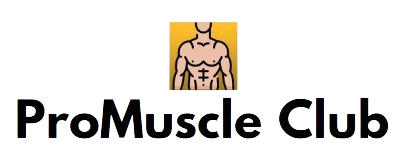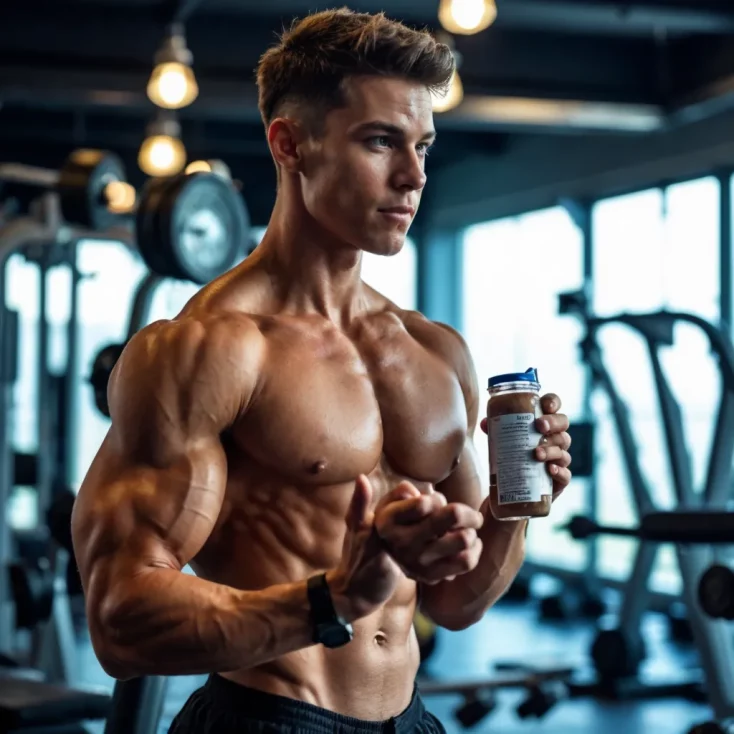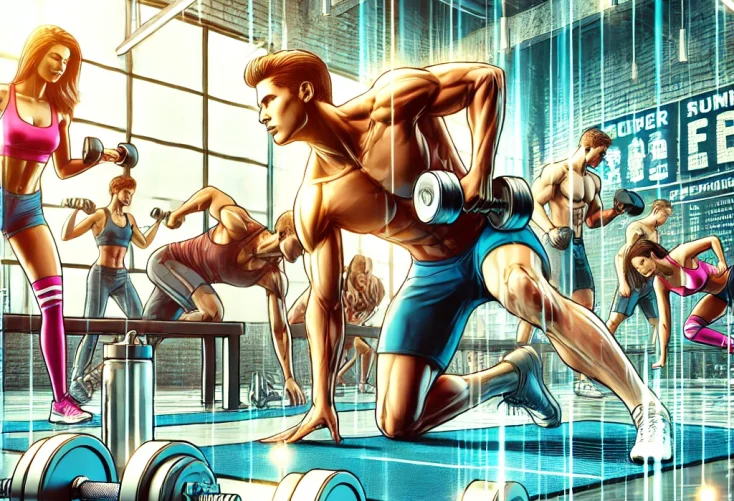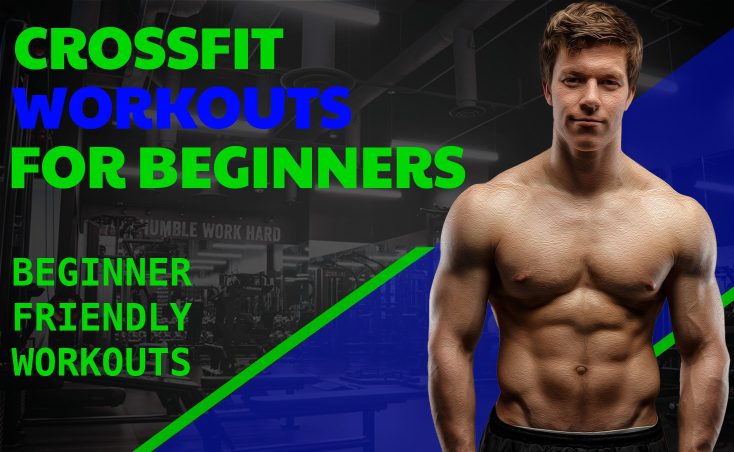Building muscle mass quickly is a goal for many fitness enthusiasts, bodybuilders, and athletes. The key to achieving this goal lies in a combination of proper nutrition, adequate rest, and most importantly, the right exercise routine. Here are ten essential exercises that can help you build muscle mass effectively and efficiently.
| Exercise | Primary Muscles Targeted | Equipment Needed | Complexity Level | Compound or Isolation | Additional Benefits |
| Squats | Quadriceps, Hamstrings, Glutes | Barbell, Dumbbells | Intermediate | Compound | Core strength, stability |
| Deadlifts | Lower Back, Glutes, Hamstrings | Barbell | Intermediate | Compound | Full-body strength, posture |
| Bench Press | Chest, Shoulders, Triceps | Barbell, Dumbbells | Intermediate | Compound | Upper body strength |
| Pull-Ups | Back, Biceps, Shoulders | Pull-up Bar | Advanced | Compound | Grip strength, upper body |
| Overhead Press | Shoulders, Triceps, Upper Chest | Barbell, Dumbbells | Intermediate | Compound | Shoulder stability, core |
| Barbell Rows | Back (Lats, Rhomboids), Biceps | Barbell | Intermediate | Compound | Posture improvement |
| Lunges | Quadriceps, Hamstrings, Glutes | None or Dumbbells | Beginner | Compound | Balance, coordination |
| Dips | Chest, Shoulders, Triceps | Parallel Bars | Intermediate | Compound | Upper body strength |
| Bent-Over Rows | Upper Back, Lats, Biceps | Barbell, Dumbbells | Intermediate | Compound | Posture, upper back strength |
| Leg Press | Quadriceps, Hamstrings, Glutes | Leg Press Machine | Beginner | Compound | Lower body strength |
1. Squats

Squats are often referred to as the king of all exercises. They target the quadriceps, hamstrings, glutes, and lower back, making them a comprehensive lower body workout. For maximum muscle growth, incorporate variations such as front squats and goblet squats into your routine.
How to Perform:
- Stand with feet shoulder-width apart.
- Lower your body by bending your knees and hips, keeping your back straight.
- Push through your heels to return to the starting position.
2. Deadlifts
Deadlifts are a full-body exercise that primarily targets the posterior chain, including the lower back, glutes, and hamstrings. They also engage the core and upper body, making them essential for overall strength and muscle growth.

How to Perform Deadlifts Step-by-Step
Deadlifts are a powerful compound exercise that targets multiple muscle groups, primarily the posterior chain. Here’s a step-by-step guide to performing deadlifts with proper form:
1. Setup
- Barbell Placement: Place a loaded barbell on the ground in front of you. The bar should be close to your shins, about mid-foot.
- Foot Position: Stand with your feet shoulder-width apart or slightly narrower, with your toes pointing slightly outward.
- Grip: Bend at your hips and knees to grasp the bar with an overhand grip (palms facing you) or a mixed grip (one palm facing you, one palm facing away). Your hands should be just outside your knees.
2. Starting Position
- Back Position: Keep your back straight and your spine neutral. Your chest should be up, and your shoulders should be slightly in front of the bar.
- Hip Position: Your hips should be lower than your shoulders but higher than your knees.
- Core Engagement: Brace your core by tightening your abdominal muscles as if you’re about to take a punch.
3. Lifting the Bar
- Initial Lift: Push through your heels to lift the bar. Your legs should do most of the initial work. The bar should stay close to your body.
- Hip Extension: As the bar passes your knees, extend your hips forward to stand up straight. Your shoulders should stay back and down.
- Finish Position: At the top of the lift, your body should be in a straight line from head to toe, with your shoulders back, chest out, and glutes engaged. Do not lean back at the top.
4. Lowering the Bar
- Hip Hinge: Begin by pushing your hips back, allowing your torso to lean forward while maintaining a straight back.
- Knee Bend: Once the bar passes your knees, bend your knees to lower the bar to the ground.
- End Position: The bar should touch the ground gently, with your hips lower than your shoulders and your back in a neutral position, ready for the next rep.
5. Common Mistakes to Avoid
- Rounded Back: Avoid rounding your back during the lift. Keep your spine neutral to prevent injury.
- Hips Too High: Starting with your hips too high can turn the movement into more of a stiff-legged deadlift, putting extra strain on your lower back.
- Bar Path: Ensure the bar stays close to your body throughout the lift. The farther the bar is from your body, the more strain it puts on your lower back.
- Lockout: Avoid overextending your lower back at the top of the lift. Stand up straight without leaning back.
6. Tips for Success
- Warm-Up: Always warm up your muscles before performing deadlifts to prevent injury.
- Proper Footwear: Wear flat-soled shoes or weightlifting shoes for better stability.
- Gradual Progression: Start with lighter weights to master the form before progressing to heavier weights.
- Consistent Practice: Regular practice with proper form is key to improving your deadlift and building muscle mass effectively.
By following these steps and focusing on proper technique, you can safely and effectively perform deadlifts to build strength and muscle mass.
3. Bench Press
The bench press is a fundamental exercise for building upper body strength, particularly in the chest, shoulders, and triceps. Variations like incline and decline bench presses can target different parts of the chest.

How to Perform:
- Lie on a bench with feet flat on the floor.
- Grip the barbell slightly wider than shoulder-width apart.
- Lower the bar to your chest, then press it back up to the starting position.
4. Pull-Ups
Pull-ups are a fantastic bodyweight exercise that primarily targets the back, biceps, and shoulders. They are great for building upper body strength and muscle mass.

How to Perform:
- Hang from a pull-up bar with palms facing away (overhand grip).
- Pull your body up until your chin is above the bar.
- Lower yourself back to the starting position with control.
5. Overhead Press
The overhead press is an excellent exercise for developing shoulder strength and mass. It also engages the triceps and upper chest.
Benefits of Overhead Press
The overhead press, also known as the shoulder press, is a fundamental exercise for building upper body strength. Here are some of the key benefits of incorporating the overhead press into your workout routine:
1. Shoulder Development
The overhead press is one of the best exercises for developing the deltoid muscles in the shoulders. It targets all three heads of the deltoids (anterior, lateral, and posterior), which helps in achieving broader and more defined shoulders.
2. Upper Body Strength
This exercise engages multiple upper body muscles, including the shoulders, triceps, and upper chest. Regularly performing the overhead press can significantly enhance your overall upper body strength, making it easier to perform other pressing and lifting movements.
3. Core Stability
The overhead press requires you to maintain a stable and upright posture throughout the movement, which engages your core muscles. Strengthening your core helps improve balance and stability, reducing the risk of injury during other exercises and daily activities.
4. Improved Posture
Performing the overhead press with proper form encourages an upright posture and helps combat the effects of sitting and slouching. Strong shoulders and upper back muscles contribute to better posture and spinal alignment.
5. Functional Strength
The overhead press mimics many everyday movements, such as lifting objects overhead. By strengthening the muscles used in these motions, the overhead press enhances your functional strength and makes daily tasks easier to perform.
6. Increased Triceps Strength
In addition to the shoulders, the overhead press significantly engages the triceps. Strong triceps are essential for various pushing movements and contribute to overall arm strength and muscle mass.
7. Athletic Performance
For athletes, the overhead press can improve performance in sports that require upper body strength and stability, such as basketball, volleyball, and swimming. It enhances explosive power and endurance in the upper body, benefiting various athletic activities.
8. Hormonal Benefits
Like other compound exercises, the overhead press can stimulate the release of anabolic hormones such as testosterone and growth hormone. These hormones play a crucial role in muscle growth, recovery, and overall physical development.
How to Perform:
- Stand with feet shoulder-width apart, holding a barbell at shoulder height.
- Press the barbell overhead until your arms are fully extended.
- Lower the barbell back to shoulder height with control.
6. Barbell Rows
Barbell rows target the back muscles, particularly the lats and rhomboids. They also engage the biceps and forearms, making them a comprehensive upper body exercise.
How to Perform:
- Stand with feet shoulder-width apart, barbell in front of you.
- Bend at the hips and knees to grasp the bar with an overhand grip.
- Pull the bar towards your lower chest, squeezing your shoulder blades together.
- Lower the bar back to the starting position with control.
7. Lunges
Lunges are excellent for building lower body strength and muscle mass. They target the quadriceps, hamstrings, and glutes, while also improving balance and coordination.
| Benefit | Description |
| Leg Strength | Strengthens quadriceps, hamstrings, and glutes. |
| Improved Balance and Stability | Enhances overall balance and coordination. |
| Functional Fitness | Improves everyday movements and reduces injury risk. |
| Core Engagement | Strengthens core muscles, improving posture and stability. |
| Hip Flexor Flexibility | Enhances range of motion and reduces discomfort. |
| Symmetrical Strength | Corrects muscular imbalances between legs. |
| Glute Activation | Targets gluteal muscles, improving performance and reducing injury risk. |
| Versatility | Can be modified to target different muscle groups. |
| Cardiovascular Fitness | Elevates heart rate, providing cardiovascular benefits. |
| Weight Loss | Burns calories and improves body composition. |
How to Perform:
- Stand with feet hip-width apart.
- Step forward with one leg, lowering your hips until both knees are bent at 90 degrees.
- Push through your front heel to return to the starting position.
- Repeat on the other leg.
8. Dips
Dips are a powerful exercise for building the chest, shoulders, and triceps. They can be performed using parallel bars or a bench.
How to Perform:
- Grasp the parallel bars and lift yourself to the starting position.
- Lower your body by bending your elbows until your upper arms are parallel to the ground.
- Press yourself back up to the starting position.
9. Bent-Over Rows
Bent-over rows are great for targeting the upper back, lats, and biceps. They help improve posture and build a strong, muscular back.

How to Perform:
- Stand with feet shoulder-width apart, holding a barbell or dumbbells.
- Bend at the hips, keeping your back straight and knees slightly bent.
- Pull the weights towards your lower chest, squeezing your shoulder blades together.
- Lower the weights back to the starting position with control.
10. Leg Press
The leg press is a compound exercise that targets the quadriceps, hamstrings, and glutes. It allows for heavy lifting with less strain on the lower back compared to squats.
| Benefit | Description |
| Quadriceps Development | Builds size and strength in the quads. |
| Hamstring and Glute Activation | Engages hamstrings and glutes for a balanced lower body. |
| Reduced Lower Back Stress | Less stress on the lower back compared to squats. |
| Isolation of Leg Muscles | Allows greater isolation of leg muscles. |
| Controlled Movement | Provides a controlled range of motion, reducing injury risk. |
| Strength and Power | Enhances lower body strength and power. |
| Progressive Overload | Facilitates progressive overload for continued muscle growth. |
| Versatility | Different foot positions target various parts of the legs. |
| Joint Flexibility | Improves joint flexibility and mobility in hips, knees, and ankles. |
| Rehabilitation | Suitable for rebuilding strength and mobility post-injury. |
How to Perform:
- Sit on the leg press machine with feet shoulder-width apart on the platform.
- Lower the platform by bending your knees to a 90-degree angle.
- Press the platform back to the starting position, extending your legs fully.
Conclusion
Incorporating these ten essential exercises into your workout routine can significantly boost your muscle mass growth. Remember to combine these exercises with proper nutrition, adequate rest, and consistent training to achieve the best results. Always prioritize proper form to prevent injuries and maximize the effectiveness of your workouts. Happy lifting!



